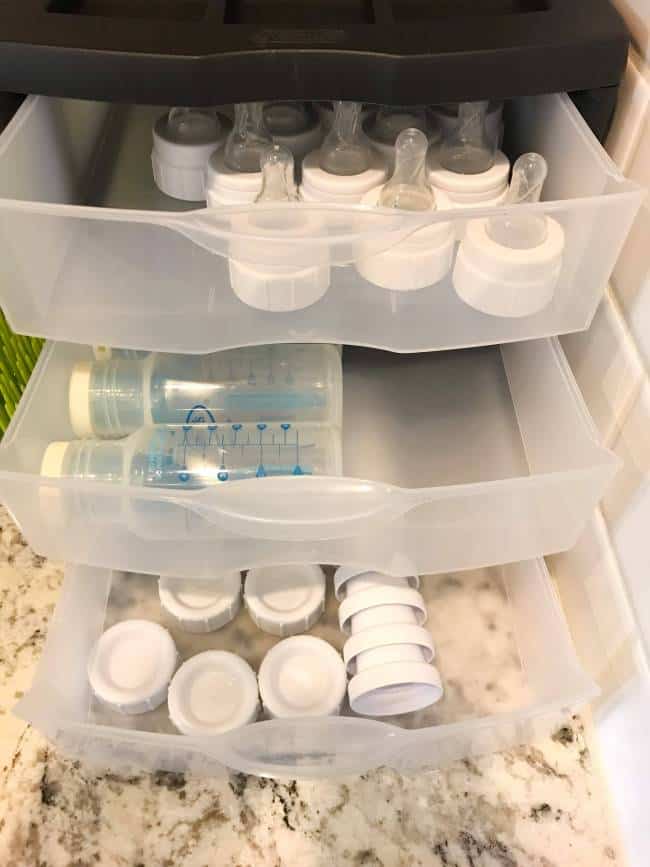Ultimate Guide: How to Organize Baby Bottles for Maximum Efficiency
Organizing baby bottles is a crucial aspect of maintaining a tidy and efficient feeding station for your little one. With the right strategies and tools, you can streamline the process, ensure hygiene, and make bottle preparation a breeze. In this comprehensive guide, we'll explore practical tips and methods for organizing baby bottles effectively, keeping everything clean, accessible, and clutter-free.
1. Clean and Prepare
a. Wash Bottles Regularly:
- Daily Cleaning: Wash baby bottles, nipples, and caps thoroughly after each use using warm, soapy water.
- Sterilization: Consider sterilizing bottles periodically, especially when they're new or after illness, following manufacturer guidelines.
b. Air Dry:
- Allow Proper Drying: After washing, air dry bottles and components on a clean drying rack to prevent bacterial growth.
- Avoid Towels: Refrain from using towels for drying, as they can harbor bacteria and leave lint residue.

how to organize baby bottles
2. Choose a Storage Solution
a. Drying Rack:
- Compact Design: Opt for a drying rack specifically designed for baby bottles, featuring slots for bottles, nipples, and accessories.
- Portable Options: Consider collapsible or travel-friendly drying racks for convenience on-the-go.
b. Drawer Organizer:
- Divided Compartments: Use drawer organizers with divided compartments to keep bottles and accessories separated and easily accessible.
- Customizable Design: Look for organizers with adjustable dividers to accommodate different bottle sizes and shapes.
3. Organize by Type and Size
a. Group Similar Items Together:
- Separate Bottles from Accessories: Keep bottles, nipples, caps, and brushes grouped together for efficient organization.
- Arrange by Size: Arrange bottles by size, with smaller bottles towards the front and larger bottles towards the back for easy access.
b. Use Storage Bins or Baskets:
- Categorize by Purpose: Use clear bins or baskets to categorize bottles based on their purpose, such as feeding, travel, or storage.
- Labeling: Consider labeling bins or baskets for quick identification of contents.
4. Store in a Convenient Location
a. Near Feeding Station:
- Accessibility: Store organized bottles and accessories near your feeding station for easy access during feeding times.
- Avoid Clutter: Keep the area tidy by limiting the number of bottles stored to what is necessary for daily use.

how to organize baby bottles
b. Away from Contaminants:
- Avoiding Contaminants: Store bottles away from potential contaminants such as cleaning supplies, pet areas, or food preparation zones.
- Ensure Hygiene: Maintain cleanliness in the storage area to prevent contamination of bottles and accessories.
5. Regular Maintenance
a. Check for Wear and Tear:
- Inspect Regularly: Periodically check bottles, nipples, and caps for signs of wear, damage, or deterioration.
- Replace as Needed: Replace worn or damaged components to ensure the safety and functionality of baby bottles.
b. Reevaluate Organization:
- Adjust as Necessary: Reevaluate your organization system periodically and make adjustments as your baby's needs change.
- Streamline Process: Continuously look for ways to streamline the process and improve efficiency in organizing baby bottles.
Conclusion
Organizing baby bottles doesn't have to be a daunting task. By following these practical tips and methods, you can create a well-organized feeding station that makes bottle preparation a breeze. From cleaning and preparing bottles to choosing the right storage solutions and maintaining regular maintenance, every step plays a crucial role in ensuring hygiene, accessibility, and efficiency. So, roll up your sleeves, dive into organizing your baby bottles, and enjoy the convenience of a tidy and efficient feeding routine!